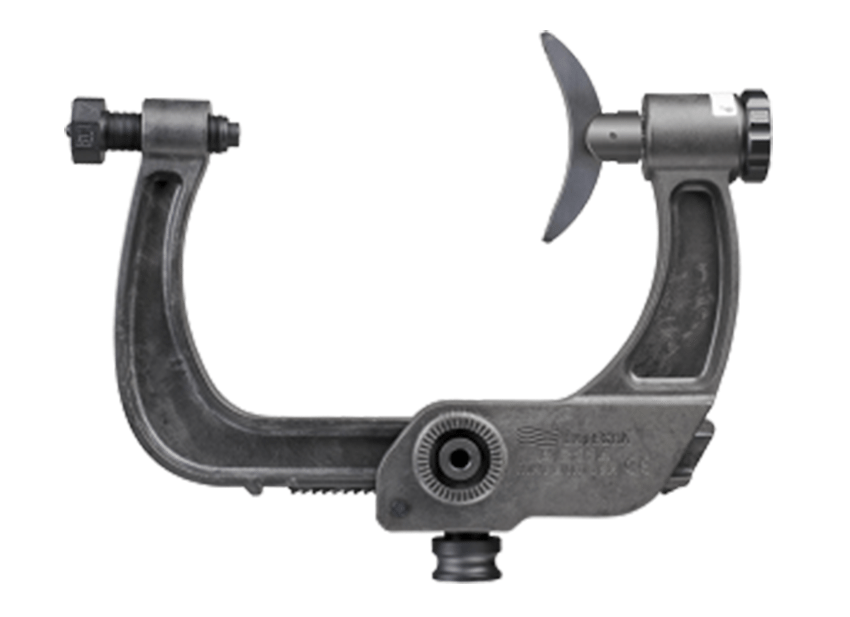Trusted 3-Point Fixation, Minimal Artifact
- Provides rigid 3-point skeletal fixation for all cranial and cervical procedures involving x-ray imaging, including Digital Subtraction Angiography (DSA)
- Composite Materials provide strength, durability and reduced artifact
- For use with the MAYFIELD Infinity XR2 Radiolucent Base Unit (A2079) or the A1079 Radiolucent Base unit
Part Number: A-2114
Warnings
Failure to read and follow the instructions furnished in the product insert may result in serious patient injury. The skull Clamp must be applied along the center line of the patient's head with pins entering the skull perpendicularly. Failure to properly position the Skull Clamp on the patient's head could result in patient injury such as scalp laceration due to skull pin slippage. Failure to properly position patient and to fully secure all adjustment positions of the Skull Clamp or any support device may result in patient injury. The device is not indicated for use in MR environment. Never attempt to resharpen skull pins. Dull or bent pins should be replaced. When using MAYFIELD Skull Pins, follow instructions for use supplied with the product. Skull pins not recommended for use on children under five (5) years of age and extreme caution should be exercised in pediatric cases because of the thin skull. MAYFIELD Child Skull Pins are recommended for young children over the age of five (5) years. It is at the discretion of the user, when the adult or child skull pins should be used. Failure to properly position the patient and to fully secure all adjustment portions of this or any support device may result in serious patient injury. Loading in excess of 80 lbs. (356 N) is not recommended. Installation of Force Applicator; this check is important. It facilitates clamp application and removal. This starting position is necessary to allow removal of the clamp from the patient following the procedure.
Cautions
Visually confirm that there are no skull pins in the rocker arm or torque screw before removing the rocker arm attachment. It is safest to completely remove the ratchet extension from the clamp before removing skull pins or changing rocker attachments. Carefully inspect reusable skull pins before each use. To maintain proper fixation, pins should be of equal length. Damaged (dull, bent, etc.)pins should be replaced. It is recommended that spare pins always be kept available. Integra strongly recommends that only MAYFIELD branded skull pins be used with MAYFIELD Skull Clamps. Integra does not offer warranty protection when a non-MAYFIELD brand skull pin is used with a MAYFIELD Skull Clamp. 60 lbs. (267 N) of force is recommended for adults. 40 lbs (178 N) of force is recommended for children. All force setting are at the user's discretion. Never exceed 80- lbs. (356 N) for force. Make sure the trajectory of the single -pin is the Skull Clamp intersects the center of the patient's head and the rocker arm to correctly secure the Skull Clamp to the patient's head. Avoid the areas of the frontal sinus, temporal fossa, major blood vessels, nerves, previously restored or abnormally thin bone. Before fully tightening, always be certain that the sunburst teeth of the Swivel Adaptor and the Transitional Member fittings are the same size and properly mesh. Failure to do so may damage fittings. The stop wheel is not a lock knob. Once full contact is achieved, do not turn the Stop Wheel further because doing so will apply additional force to the pins that will not be indicated buy the Force Applicator. Any deviation from this guideline could result in damage to equipment as well as improper cleaning results. Parameters given below must be followed exactly in order to assure proper cleaning and avoid damage to the equipment. Do not exceed temperature of 135° C or a time of 4 minutes or damage may result. Once tray is removed from autoclave allow components to reach room temperature before handling, storage or use.









